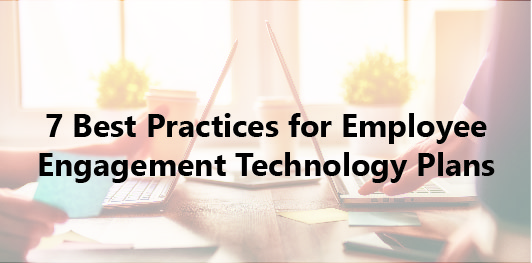For HR and IT professionals, it’s important to stay on top of the latest in technology developments that foster employee retention and engagement, which was the very topic of our recent “Leveraging Technology to Boost Employee Engagement” webinar. Our webinar featured Boy Scouts of America’s Marianne Elden and Forrester analyst TJ Keitt.
 Over the coming weeks, RBA will be diving deeper into each of the topics presented during that employee engagement webinar. But, this week, we’ll focus on best practices shared primarily from Forrester Senior Analyst TJ Keitt. He spoke from his expertise serving customer experience (CX) professionals to unite business and technology. Keitt writes frequently for Forrester’s Customer Experience Blog and has been featured in articles by ComputerWorld and the Financial Times.
Over the coming weeks, RBA will be diving deeper into each of the topics presented during that employee engagement webinar. But, this week, we’ll focus on best practices shared primarily from Forrester Senior Analyst TJ Keitt. He spoke from his expertise serving customer experience (CX) professionals to unite business and technology. Keitt writes frequently for Forrester’s Customer Experience Blog and has been featured in articles by ComputerWorld and the Financial Times.
What follows are seven best practices to consider when deploying new technology for employee engagement benefits, which were all inspired by the webinar.
1. Consolidate HR & IT Strategy
Keitt started his talk by describing the mentality of forward-thinking organizations. They consolidate thinking between the chief people officer (HR) and chief information officer (technology), who must combine to:
- Serve employees across the organization.

- Focus on helping employees achieve business goals.
- Create specific experiences to help employees be productive.
To create a best-in-class employee engagement technology program, you must first unite your HR and IT teams.
2. Think of the Employee First
When looking at a technology plan that sustains employee engagement, it’s best to always put the employees’ needs first. You can do this by thinking of how employee teams are structured and then looking at what’s needed to make them successful. Build employee personas (not role profiles) to help you picture for whom you’re building employee engagement platforms. Personas help you reflect on different types of needs, problem areas and interaction inefficiencies, as well as motivations and goals of your workforce.
3. Know Your Customer Experience Ecosystem
Successful employee engagement programs put the employee first and also engage them with partners and customers, because these audiences cross paths! For example, when a customer comments on your company’s social media site, an employee will interact with them. Uniting these systems is ideal.
Often referred to as a CX ecosystem, your customer experience ecosystem is the interplay of your people and ongoing circumstances. Engage with workers across your organization from design to information workers who can help you understand your CX ecosystem and the relationships involved.
“Relationships are predicated on the idea that every party is getting something out of it,” Keitt explained. He shared three considerations when defining your CX ecosystem:
- The operating environment of your company from your legal and finance departments to your cloud service provider, cleaning crews and design agencies.
- Behind the scenes activities, including website, sales staff, mobile apps, and your call center.
- Customer-facing circumstances, such as regulations, social media, news articles, your competitors and even the weather.
4. Business Agility Is Key
For a good employee engagement technology plan, you need to be agile. Business agility is the awareness and execution quality to embrace marketing and operational changes as a matter of routine.
“You have to turn on a dime as an organization,” Keitt said in the webinar. Liberate your technology systems to poise your company to achieve great things.
5. Implement Technology that Supports Workforce Flexibility
Did you know information workers spend four or more hours per 40-hour workweek on finding digital files, according to Forrester research? Get out of the way of your employees’ productivity by making a commitment to achieving business agility. Simplifying processes can greatly help all your employees on a daily basis. Make it easy for your employees to work digitally!
6. Beware of Technological Pitfalls
Some of the most common threats to successful employee engagement programs, according to Keitt, include:
- Information Siloes – Locating and using information becomes extremely time-consuming.
- Inconsistent Deployment – Collaboration tools can actually complicate relationship management if your workforce is scattered amongst more than one collaboration platform.
- Poorly Developed Mobile Applications – What good is a mobile app if it is not well-received or cannot be used by employees without smartphones or tablets?
7. Set Your Measurements
Determine, internally, who will be accountable for measuring employee engagement systems and align these inefficiencies with hard business metrics. For example, in the webinar, we discussed that Red Robin and Boy Scouts of America measured employee engagement and retention.
Learn more about building a technology plan to sustain employee engagement…
The webinar is available on RBAConsulting.com – or contact RBA directly!


